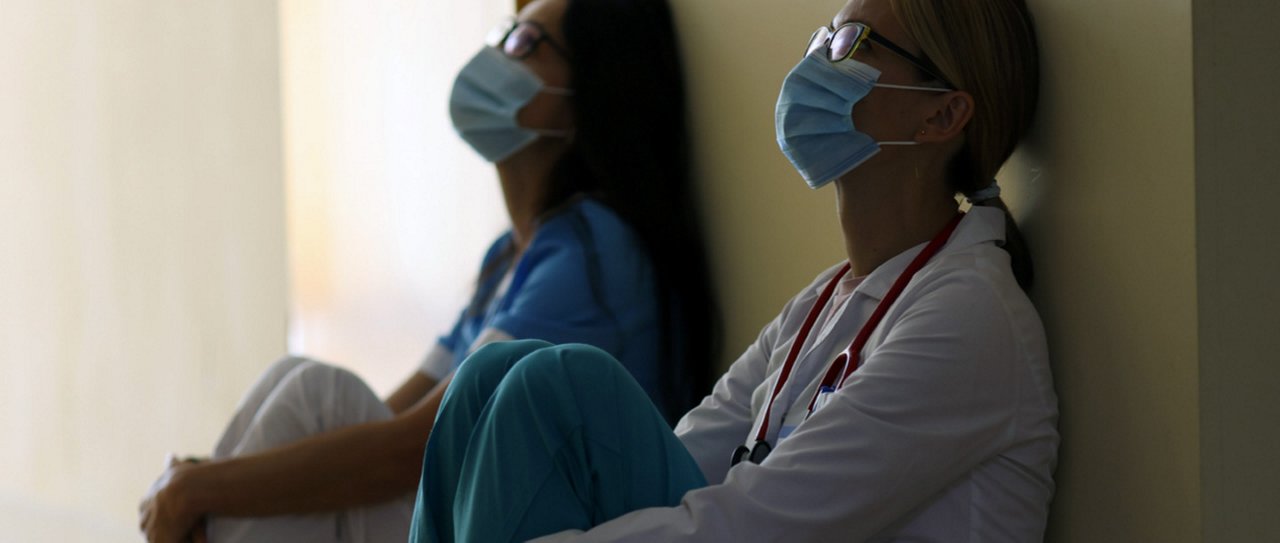When those who help need help: National Physician Suicide Awareness Day

When I was in medical school, two of my fellow students died – one by suicide and one from an alcohol use disorder. A third student survived a suicide attempt. At that time, I had not yet become a psychiatrist, and I shared the common misperception of suicide as a largely unpreventable tragedy. In our grief, my classmates and I did not connect these deaths with the pressures inherent in our career path.
Even as we mourned the loss of our individual friends and colleagues, we didn’t recognize the systemic factors that may have contributed to their deaths. Today, our profession recognizes National Physician Suicide Awareness Day. This solemn occasion reflects how cultural awareness and the scientific understanding of suicide and its risk factors have evolved since my time as a medical student.
Movies and television often romanticize doctors as stoic heroes, calmly solving one crisis after another. In reality, research shows they are just as vulnerable to professional and personal pressures as everyone else. In fact, physicians die by suicide at a higher rate than the general population, and female physicians face an even higher risk than their male counterparts. This elevated risk begins early in a doctor’s career: during the first year in medical school.
The stress of the COVID-19 pandemic has further elevated depression, burnout and suicidal thoughts among physicians, with one hospital in New York finding that 6.6% of physicians surveyed had suicidal thoughts.
What are the risk factors for physician suicide?
Several factors help explain why so many medical students and physicians die by suicide:
- Financial strain – While the end result of becoming a physician can be lucrative, the path to get there is long and costly. Students typically accumulate significant debt. In fact, the average medical school graduate owes $241,600 in total student loan debt. The long road to repaying that debt can feel overwhelming to some.
- Alienation – Medical school is a full-time commitment that leaves few opportunities for nurturing friendships and family bonds. Many students move away from home for school, and all are on the go practically round the clock, either studying or working. The schedule of a fully licensed physician is hardly less hectic and often puts a strain on personal relationships. Vital support networks can slip away as a result.
- Burden, burnout and depression – Making life or death decisions is part of any physician’s job description. That alone can lead to feelings of unrelenting anxiety, exhaustion and a lack of self-worth. On top of that, physicians must cope with legal fallout from their decisions and the responsibility of staying on top of the latest technologies and medical research, all while managing administrative burdens and maintaining long, irregular work hours. The COVID-19 pandemic has made our health care workers even more overworked and exhausted, adding to the problem of burnout in the profession. While burnout in and of itself is not a cause of suicide ideation, it can have a significant impact on well-being, disrupt personal life and contribute to depression.
- Substance use – Studies show that 10 to 15% of physicians in the United States face challenges related to substance use disorders at some point in their career. Research shows that substance use is associated with increased risk for suicide.
Ironically, while doctors face professional challenges that can put a severe strain on mental health, several factors can make it more difficult for them to seek out support.
- Stigma – As with the general population, mental illness carries a significant stigma among medical care professionals. Although the COVID-19 pandemic has drawn widescale attention to the risk of professional burnout among health care professionals, 73% of emergency physicians identified stigma as a primary barrier to mental health care in one recent survey.
- Scheduling – Physicians maintain long hours, which makes it difficult to schedule appointments for their own well-being, especially when many mental health providers see patients only during traditional business hours. Given that emergency situations are routine for many doctors, keeping appointments can be just as challenging as scheduling them.
- Confidentiality and professional consequences – Doctors also worry about the challenges of maintaining confidentiality and the perceived, and sometimes real, consequences if treatment becomes public knowledge: paying more for malpractice insurance, losing hospital privileges or even losing their license to practice. This is why the North Carolina Medical Board eliminated the requirement that doctors disclose physical or mental health issues as part of the annual license renewal process. But in some cases, insurance may require a physician to utilize a mental health care provider in the same health system where they work. This can leave physicians feeling more exposed and vulnerable.
It’s time to be vocal: The culture of silence is changing
As a student, I couldn’t see my classmates’ deaths in the context of professional stressors and stigma. I didn’t even realize that, as a medical student, I too was at a higher risk of death by suicide. Although we discussed the loss as a class, we didn’t make the connection to our own vulnerability – we didn’t recognize the susceptibility to depression and substance use disorders in ourselves and our peers.
The good news is, that culture of silence is starting to change.
More and more leading voices in the health care system now embrace a whole-person approach to care, recognizing that behavioral health – along with access to nutritious food, shelter, transportation and other non-medical drivers of health – is integral to overall well-being. At Blue Cross and Blue Shield of North Carolina (Blue Cross NC), we are leading a statewide push to integrate behavioral health and primary care. This is enhancing access to behavioral health care, while at the same time helping to promote a cultural shift in how we think and talk about mental health.
While the pandemic has increased stress and burnout among health care workers, it has also helped raise broad awareness of the issue. Members of the health care community and others have rallied in response, forming support networks and advocacy groups, such as the Dr. Lorna Breen Heroes’ Foundation.
These are steps in the right direction. To maintain the forward momentum, everyone in the health care community has much work to do. One recent study outlined several critical steps ahead, including:
- Transparency –The medical community will learn more about the causes of suicide only with open communication. This includes direct outreach to those who attempt suicide. Open and honest dialogue will help promote individual well-being and lead to greater community understanding of risk factors.
- Screening – Suicide screening and communication should be a core competency for all physicians. This includes learning how to talk peer-to-peer, and not just doctor-to-patient.
- Community – Health care providers need to work together to create communities of psychological safety, which support physicians who experience behavioral health disorders or emotional distress. This work should focus on mitigating the structural barriers to care outlined above and creating more time and space for peers to create a social support network.
- Culture – The health care community needs to pursue a top-down strategy of suicide education. This will foster a community-oriented approach to prevention and foster a comprehensive shift in cultural attitudes. This work will require careful examination of the student experience, with the goal of rescripting the “unwritten curriculum” in medical education that teaches students to avoid seeking self-help.
This won’t be the work of one person or organization. These changes demand sweeping action on a unified front.
On this National Physician Suicide Awareness Day, many of us in the profession will reflect on the colleagues we’ve lost over the years. Even as we grieve those losses, the missed opportunities and vanished talent, we also look forward and recognize the possibilities ahead if we unite around this all-important cause: taking care of the people who take care of us.
Browse related articles


Blue Cross and Blue Shield of North Carolina does not discriminate on the basis of race, color, national origin, sex, age or disability in its health programs and activities. Learn more about our non-discrimination policy and no-cost services available to you.
Information in other languages: Español 中文 Tiếng Việt 한국어 Français العَرَبِيَّة Hmoob ру́сский Tagalog ગુજરાતી ភាសាខ្មែរ Deutsch हिन्दी ລາວ 日本語
© 2024 Blue Cross and Blue Shield of North Carolina. ®, SM Marks of the Blue Cross and Blue Shield Association, an association of independent Blue Cross and Blue Shield plans. All other marks and names are property of their respective owners. Blue Cross and Blue Shield of North Carolina is an independent licensee of the Blue Cross and Blue Shield Association.



